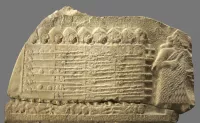Royal Palm Beach is a village located inland in southeast Florida, part of Palm Beach County and the Miami metropolitan area. Despite its name, it is situated about fifteen miles from the Atlantic Ocean. As per the 2020 US census, the village's population was 38,932.
June 18, 1959: Incorporation of Royal Palm Beach
On June 18, 1959, Royal Palm Beach was officially incorporated, marking its transformation from a primarily uninhabited area to a developing village.
June 30, 1959: Groundbreaking Ceremony and Early Development
On June 30, 1959, a groundbreaking ceremony, attended by Seminole tribe officials, marked the beginning of Royal Palm Beach's development. Engineering for waterways and roads commenced, and model homes were erected.
1959: Desser's Vision and Village Charter
In 1959, driven by Arthur Desser's vision, a massive drainage project paved the way for Royal Palm Beach's development. The state legislature granted a charter, officially naming the development "Royal Palm Beach."
June 1960: Appointment of First Police Chief
Joseph Klopp was appointed as Royal Palm Beach's first police chief in June 1960, marking the beginning of a formal law enforcement presence in the village.
1960: Slow Growth and Expansion
From 1960 to 1967, under the leadership of Herbert Kaplan as CEO of RPB Colony, Royal Palm Beach experienced gradual growth, primarily in the "Colony" section and later expanding into the Willows and LaMancha subdivisions.
1961: Lefcourt Bankruptcy and Friedland's Acquisition
Arthur Desser's vision for Royal Palm Beach faced a setback in 1961 with the bankruptcy of Lefcourt. Friedland stepped in, acquiring Desser's interest and establishing Royal Palm Beach Colony Inc. to continue the village's development.
January 1963: Formation of Volunteer Fire Department
January 1963 saw the formation of a volunteer fire department in Royal Palm Beach, with eight individuals operating out of a construction trailer.
1964: Transition to Elected Village Council
In 1964, the Village Council of Royal Palm Beach transitioned from a developer-appointed body to one elected by the people.
1969: Relocation of Fire Department Headquarters
The fire department headquarters was moved to a maintenance building in Commerce Park in 1969, providing improved facilities with three bays and two trucks.
1972: First Paid Firefighters
In 1972, Royal Palm Beach hired its first two full-time firefighters, each earning approximately $6,000 annually.
1974: Focus on Recreation and Parks Development
Since 1974, Royal Palm Beach has placed a significant emphasis on recreational development. This resulted in the establishment of approximately 325 acres of parks and green spaces under the purview of the recreation department.
1975: Appointment of First Full-Time Fire Chief
Karl Combs was appointed as Royal Palm Beach's first full-time fire chief in 1975, receiving an annual salary of $13,500.
1976: Final Move of Fire Department and Shared Building
The fire department relocated to its final location on Royal Palm Beach Blvd. in 1976, sharing the building with the police department at that time. This move facilitated an expansion in manpower and equipment for the department.
1977: Establishment of Permanent Village Hall
The Village Council found its permanent home in 1977 with the establishment of the Village Hall complex.
1979: Marketing Push for Land Sales
A marketing initiative launched in 1979 focused on attracting builders to purchase tracts of land in Royal Palm Beach, leading to significant growth over the following 15 years.
1982: Start of Sam Lamstein's Mayoral Term
Sam Lamstein's time as mayor of Royal Palm Beach began in 1982.
1983: Opening of Crestwood Middle School
The year 1983 saw the opening of Crestwood Middle School, marking the establishment of the first community school in Royal Palm Beach.
1985: Opening of H.L. Johnson Elementary School
H.L. Johnson Elementary School opened its doors in 1985, further expanding educational opportunities in Royal Palm Beach.
1986: Opening of Palms West Hospital and Wellington Regional Medical Center
In 1986, Royal Palm Beach saw a significant expansion in healthcare facilities with the opening of Palms West Hospital and Wellington Regional Medical Center. Both hospitals, with 117 and 120 beds respectively, underwent continuous expansion to meet the needs of the growing community.
1989: Opening of Cypress Trails Elementary School
Cypress Trails Elementary School was established in 1989, marking the third elementary school to open in Royal Palm Beach.
1990: Designation as Tree City USA and Bird Sanctuary
Royal Palm Beach received the Tree City USA designation in 1990, recognizing its commitment to urban forestry. The entire village was also designated as a bird sanctuary, reflecting its dedication to environmental conservation.
1990: End of Sam Lamstein's Mayoral Term
Sam Lamstein's tenure as mayor of Royal Palm Beach concluded in 1990.
1992: Beginning of Tony Masilotti's Mayoral Term
Tony Masilotti assumed the role of mayor of Royal Palm Beach in 1992.
1993: Opening of the Cultural Center
In 1993, Royal Palm Beach celebrated the opening of its 6,300-square-foot Cultural Center, further enhancing the village's recreational and cultural offerings.
1994: Opening of Second Fire Station
A second fire station opened in Royal Palm Beach in 1994, located at the entrance of Counterpoint Estates. This strategic placement aimed to improve response times for residents residing in the State Road 7 area.
1995: Town-Crier Online Presence
The Town-Crier, a local newspaper, made its mark on the digital landscape in 1995 by launching the first newspaper website in Palm Beach County.
1997: Opening of Royal Palm Beach High School
Royal Palm Beach High School welcomed its first cohort of 1,100 students in 1997, expanding secondary education options in the village.
1998: Start of David Lodwick's Mayoral Term and End of Tony Masilotti's Term
David Lodwick's tenure as mayor of Royal Palm Beach began in 1998, marking the end of Tony Masilotti's time in office.
1998: Town-Crier Ownership Change
The Town-Crier newspaper, serving Royal Palm Beach and nearby communities, was sold to the Manning family in 1998. The paper was founded by the Markey family and had a history of publishing twice-weekly, even featuring editions for specific communities.
March 1999: Merger with Palm Beach County Fire-Rescue
Following a study and much debate, a decision was made in March 1999 to merge Royal Palm Beach's fire department with Palm Beach County Fire-Rescue, consolidating equipment and personnel.
2000: Demographics
By 2000, Royal Palm Beach had a significant Cuban population, ranking eighty-ninth in the US with 2.95% Cuban residents. The village also had a substantial Jamaican community, being thirty-second in the US with 4.10% Jamaican residents, a percentage similar to Tamarac and Goulds.
2000: 2000 US Census - Household Composition
Data from the 2000 US Census provided insights into the composition of households in Royal Palm Beach. A significant portion, 63.9%, consisted of married couples without children. Families with children under 18 represented 42%, while 11% were headed by single females. Non-related individuals made up 21.4% of households. Notably, 17.2% were single-person households, and 8.8% had a solitary resident aged 65 or older.
2000: Language Diversity
In 2000, English was the primary language for 85.80% of Royal Palm Beach residents. Spanish followed with 11.49%, and Tagalog was spoken by 0.48% of the population.
2000: Village Demographics and Income
In 2000, the median income for a household in Royal Palm Beach was $54,766, and for families it was $61,063. The data showed differences in income between males ($39,356) and females ($29,991). The per capita income was $21,875. Approximately 3.7% of families and 4.3% of the population were below the poverty line.
2000: 2000 US Census - Age and Gender Demographics
The 2000 US Census captured age and gender demographics in Royal Palm Beach. The population distribution revealed 28.6% under 18, 6.5% aged 18 to 24, 30.8% in the 25 to 44 age group, 20.8% between 45 and 64, and 13.3% aged 65 and above. The median age was 37. The data also indicated a gender ratio of 91.3 males for every 100 females. When considering individuals aged 18 and above, the ratio shifted to 87.6 males per 100 females.
2002: Continued School Openings
The growth of educational infrastructure continued in Royal Palm Beach with schools in the western communities frequently reaching capacity in their first year.
2003: Opening of Third Elementary School
Royal Palm Beach's third elementary school opened in the 2002-2003 school year, located on Okeechobee Blvd., west of the Madison Green residential development.
2007: Contracting of Policing Duties to Palm Beach County Sheriff's Department
In 2007, Royal Palm Beach decided to contract its policing duties to the Palm Beach County Sheriff's Department, resulting in cost savings for village taxpayers.
2010: 2010 US Census - Population and Housing Data
According to the 2010 United States census, Royal Palm Beach, Florida had a population of 34,140 individuals. The village comprised 10,856 households and 8,453 families.
2020: 2020 US Census
The 2020 US Census recorded Royal Palm Beach, Florida, as having 38,932 residents.
2020: 2020 US Census - Population and Housing Data
The 2020 United States census revealed that Royal Palm Beach, Florida, was home to 38,932 individuals, residing in 12,398 households, and forming 9,708 families.
April 2024: City Council Composition
As of April 2024, the city council of Royal Palm Beach consists of four filled chairs.
March 2026: Mayor's Term Expiration
Fred Pinto's term as the Mayor of Royal Palm Beach is set to end in March 2026.
Trending
3 months ago Johor Regent Seeks Sale of $2.7 Billion Singapore Land Near Botanic Gardens
1 month ago Elijah Wood's Lord of the Rings Salary Revealed: A Look at the $2.9B Legacy

24 days ago Jason Momoa as Lobo: First Look Revealed in Supergirl Concept Art and Trailer

5 months ago Russia-Ukraine War Intensifies: Key Events on Day 1,248, Fierce Fighting in Pokrovsk

6 months ago Emma Stone stars in 'Bugonia,' a sci-fi satire directed by Yorgos Lanthimos.

24 days ago Jayson Tatum Inspired by LeBron & Bronny James' Dynasty; Plans Father-Son NBA Combo
Popular

Stranger Things created by the Duffer Brothers is a popular...

XXXTentacion born Jahseh Dwayne Ricardo Onfroy was a controversial yet...
The Kennedy Center Honors are annual awards recognizing individuals and...
Turning Point USA TPUSA is an American nonprofit organization founded...

Candace Owens is an American conservative political commentator and author...

Bernie Sanders is a prominent American politician currently serving as...
